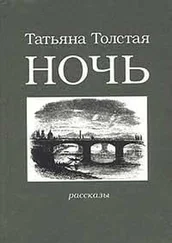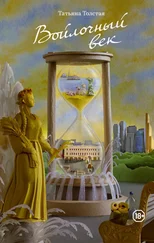And in the 1920s, after she’d had time to mourn and to move on, a wonderful young man, an engineer, asked for her hand. She was planning to marry him, but he died. She remembered the Gypsy woman and became alarmed. And in the 1930s, while traveling somewhere by train, in the compartment she met a lovely older gentleman, a professor. He kept looking at her, and then followed her into the rattling train corridor to say: “You’re so beautiful! Would you be my wife? I am a widower, my kids are grown, I have money, I’ll turn your life into a fairy tale.”
She asked for three days to think it over. After the three days were up, she declined the professor’s offer: he was so lovely and she didn’t wish to be the cause of his demise.
And that was that. No more suitors, no more love, and no children—nothing but vitamin drops in her eyes and big stiff pillows in her bed.
“Would you… would you buy a postcard from me? And a plate? I need three rubles,” said Klavsevna.
I gave her three rubles for the postcard and the plate.
On the plate, the edges of which were wrapped in kitschy gilded lace, trembled a poorly painted skylark; a reproach was written in Slavic script: “Still asleep, little man? Spring has sprung, get to work.” The postcard was of a soldier with a harmonica, with an inscription that read: “Farewell to my family, farewell to my friends, farewell to my lady, all’s come to an end.”
What was written on the other side, with a piece of paper glued over it, we are not meant to know.
“How is little Olya doing?” asked Klavsevna.
“Wonderful,” I lied.
“What a chiseled figure she has,” sighed Klavsevna.
“Yes.”
I wanted to remind her that it’s best to keep the sausages in the fridge, but she, most likely, didn’t have one.
She didn’t have anything.
That’s why her room was so spacious and full of light.
“Something to remember me by.” Klavsevna motioned with her eyes toward my pitiful acquisitions. “Maybe you’ll think about me sometimes.”
Once at the threshold, I turned back to look, but she had already dissolved into the air and blended in with the white evening light.
In 1913, or 1914, or maybe 1915—the exact date is unknown—Kazimir Malevich, a Russian painter of Polish descent, took a medium-sized canvas (79.5 cm. x 79.5 cm.), painted it white around the edges, and daubed the middle with thick black paint. Any child could have performed this simple task, although perhaps children lack the patience to fill such a large section with the same color. This kind of work could have been performed by any draftsman—and Malevich had worked as one in his youth—but most draftsmen are not interested in such simple forms. A painting like this could have been drawn by a mentally disturbed person, but it wasn’t, and had it been it’s doubtful that it would have had the chance to be exhibited at the right place and at the right time.
After completing this simple task, Malevich became the author of the most famous, most enigmatic, and most frightening painting known to man: The Black Square. With an easy flick of the wrist, he once and for all drew an untraversable line between old art and new art, between a man and his shadow, between a rose and a casket, between life and death, between God and the Devil. In his own words, he had reduced everything to “the zero of form.” Zero, for some reason, turned out to be a square, and this simple discovery is one of the most frightening events in all of art’s history.
Malevich knew what he had done. A year or so before this significant event, he, along with some friends and like-minded peers, participated in the first All-Russian Congress of Futurists. It was held at a dacha, in a bucolic, wooded area north of Saint Petersburg. Deciding to write an opera called Victory over the Sun, right there, at the dacha, they immediately got to work carrying out their plan. Malevich was in charge of scenic design. One of the set pieces was black-and-white, and it somehow resembled the future, still-unborn Square; it was used as a backdrop for one of the scenes. What would later spill out from his wrist, impulsively and with inspiration, in his Saint Petersburg studio would be recognized as a fundamental achievement of theory, an apex of accomplishment—a discovery of that critical, mysterious, coveted point after which, because of which, and beyond which nothing exists and nothing can exist.
Groping about in the dark with the brilliant intuition of an artist and the prophetic insight of a Creator, he found the forbidden figure of a forbidden color—so simple that thousands had walked past it, stepping over it, ignoring it, not noticing it…. To be fair, not many before him had dared to plan a Victory over the Sun; not many had dared to challenge the Prince of Darkness. Malevich did—and, just as is supposed to happen in tales of yearning Fausts bargaining with the Devil—the Master gladly, and without delay, whispered in the artist’s ear the simple formula of nothingness.
By the end of 1915—the First World War was already in full swing—the sinister canvas was displayed alongside others at a Futurist exhibition. All his other works Malevich displayed on the walls in the traditional manner, but The Black Square was afforded a special place. As can be seen in one of the surviving photographs, the painting is displayed in the corner, under the ceiling—right where it is customary to hang Russian Orthodox icons. It’s doubtful it eluded Malevich—a man well versed in color—that this paramount, sacral spot is called “the red corner,” the word “red” here, in the original Russian, having the additional meaning of “beautiful.” Malevich quite purposefully displayed a black hole in a sacred spot, calling this work of his “an icon of our times.” Instead of red, black (zero color); instead of a face, a hollow chasm (zero lines); instead of an icon—that is, instead of a window into the heavens, into the light, into eternal life—gloom, a cellar, a trapdoor to the underworld, eternal darkness.
Alexandre Benois, a contemporary of Malevich and an excellent artist in his own right, as well as an art critic, wrote this about the painting: “This black square in a white frame—this is not a simple joke, not a simple dare, not a simple little episode which happened at the house at the Field of Mars. Rather, it’s an act of self-assertion of that entity called ‘the abomination of desolation,’ which boasts that through pride, through arrogance, through trampling of all that is loving and gentle it will lead all beings to death.”
Many years before that, in September of 1869, Leo Tolstoy had a strange experience that would have a powerful effect on the rest of his life, one that would be, it appears, a turning point in his entire outlook. He left his house in high spirits to make an important and profitable purchase: a new estate. He and his servant were riding in a horse-drawn carriage, happily chatting. Night fell. “I dozed off but then suddenly awoke: for some reason I felt afraid…. I suddenly felt that I don’t need any of this, that there is no need to ride this far, that I’ll die right here, away from home. And I felt frightened.” They decided to spend the night in a little town called Arzamas:
We finally approached some lodge with a hitching post. The house was white, but it seemed horribly sad to me. And so I felt a great sense of dread…. There was a hallway; a sleepy man with a spot on his check—that spot seemed awful to me—showed me to my room. Gloomy was that room. I entered it and felt even more dread….
A whitewashed square room. As I remember, it was particularly painful to me that this room was square. There was one window with a red curtain…. I grabbed a pillow and lay down on the sofa. When I came to, the room was empty and it was dark…. I could feel that falling asleep again would be impossible. Why had I decided to stop here? Where am I taking myself? From what and where to am I running? I’m running from something frightful that I can’t escape…. I stepped out into the hallway, hoping to leave behind that which was tormenting me. But it came out after me and marred everything. I was just as scared, more scared even.
Читать дальше






